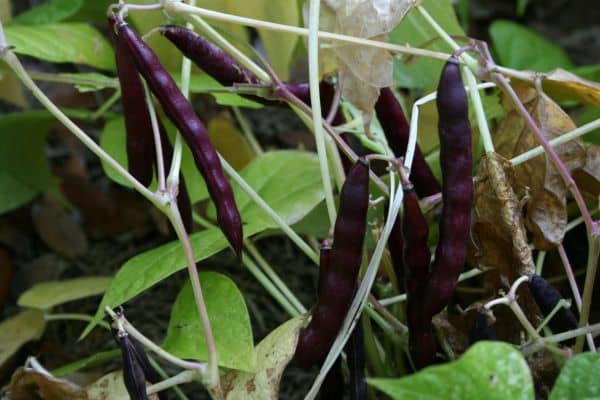Black Beans which are also known as turtle beans, caviar criolla, and frijoles negros a high in carbohydrates and low-maintenance food plants. They are high in nutritional powerhouses that are rich in plant-based protein, fiber, and antioxidants that help manage blood pressure, sugar, and cholesterol levels.
So here is how you can grow black beans in your garden and harvest its seed yourself:
When to Plant Black Beans?
The best time to plant black beans is between 68 degrees Fahrenheit to 80 degrees Fahrenheit or 20 degrees Celcius to 27 degrees Celcius as they love warm soil. But if you plant black bean seeds too early, during the cold season, or wet that will cause the seeds to rot.
They need six to eight hours of direct sun each day with well-draining soil also remember that heavy clay soils are not well suited to beans. before planting a sapling or seed you can use an inch of compost in the soil and if the seed is not growing properly you can use rhizobium bacteria as it will boost yield.
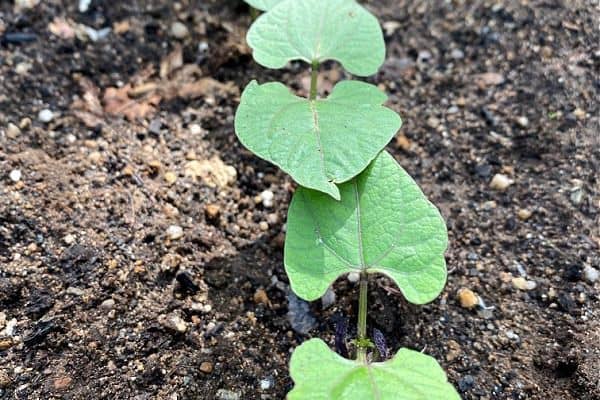
How to Plant Black Beans?
you can plant beans one inch deep and three inches apart spacing them between 15 to 18 inches apart and they also germinate quickly. The spacing will allow the plants to shade the soil and discourage weeds.
After the seeds are germinated and plants get well settled you can thin them 6 inches apart. You can also plant them indoors under grow lights three to four weeks before to get a head start on the season and after they harden off in a week you can move them to the garden.
But while moving black beans from indoors to the garden you need to do it properly as seedlings can be set back when the roots are disturbed. Then you can water them deeply to keep the soil lightly moist until the seeds have germinated.
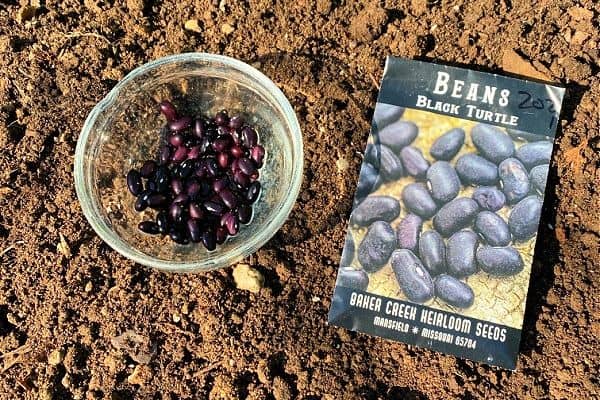
Growing Black Beans
As you may have known black beans are a low-maintenance and reliable crop but you can take a little more care of them as it will help to boost pod production and overall yield. Here are some of the ways you can grow black beans or boost pod production and overall yield:
1. Watering Black Beans
While growing black beans you will have to water them deeply when there is no rain. If the soil is dry a couple of inches down you will have to water them well. You can also use mulch around the soil of the plant to hold soil moisture and reduce the need for water.
During the plant stage when the pod develops and you will see flowers appearing then you will have to provide them extra moisture. Keeping them hydrated at this stage will increase plant yield properly.
2. Weeding
Getting weeds off the plant will also help to grow black beans properly as it also may not be the most popular garden task. Remember that black beans are vigorous plants and they can’t compete with aggressive weeds as the weeds will crowd the plants and reduce yield.
3. Black Bean Pests
Black beans may encounter pests as it is also generally easy to grow you can prevent your plants from pests by practicing biodiversity in the garden. You can plant a mixture of vegetables, herbs, and flowers as that will invite pollinators as well as beneficial insects which will decrease the pest’s inversion. Some of the common pests problems that black beans can encounter are as follows:
- Bean leaf beetles: Bean leaf beetles can cause small holes in the leaves and pods of the plant. As they are just a quarter inch long and feed on plants in late spring also the adult bean leaf beetles are greenish to red with spots on their back. You can prevent them by using the practice crop rotation and a lightweight row cover over newly planted bean beds
- Cutworms: Cutworms are one of the serious pest problems for young bean plants. Cutworms are not worms, but rather the larvae of various moth species that occur in spring when the seedlings emerge from the soil. They feed on plants at night and chew through the stem at the base of the plant. You can easily remove them with the help of diatomaceous earth or make small collars from toilet paper tubes or aluminum foil to go around the base of the plants
- Slugs: Slugs are a major bean pest as they gobble up the newly sprouted seedlings and they also feast on established plants.
4. Black Bean Diseases
Remember that if you keep the proper spacing between plants and watering practices your plants will likely get any diseases. Here are the two bean diseases that can appear in your plant and they are as follows:
- White mold: White mold appears in plants when the weather has been wet and it will spread quickly with visible on the foliage and stems of the plants. To reduce white mold occurrence you can keep air circulation around the plant by spacing and avoid wetting the foliage when watering.
- Blight: Blight also appears in wet weather that shows up as small lesions or water soaked patches on the leaves, eventually spreading to the pods and impacting yield. To get rid of it you can keep air circulation around the plant by spacing or practice crop rotation.
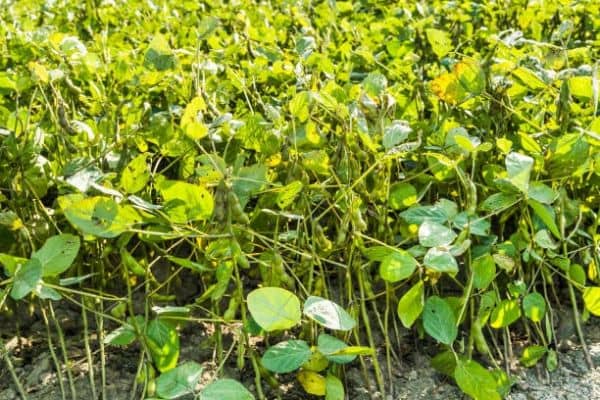
When to Harvest Black Beans
Remember harvesting time can be a difference between a high-quality and a poor-quality crop. You can determine the maturity of the pods by checking them after the summer comes to an end and if the pods are brown and dry and some still straw yellow in color they are ready to be harvested.
Remember that the pods can be half dry but you don’t have to wait to harvest them as it is important to dry them before a hard frost. A hard first can damage the seeds and affect storage quality or you can also pick a sunny dry day to harvest beans.
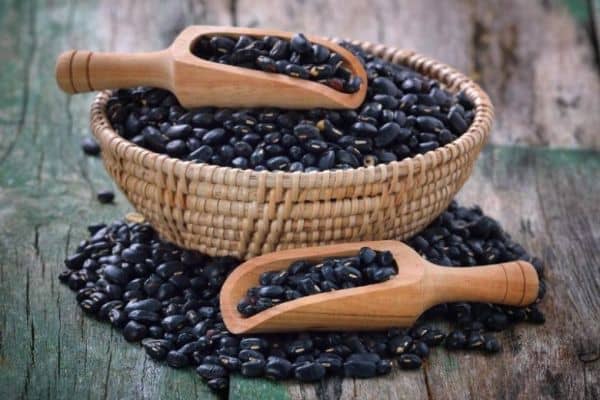
How to Harvest Black Beans
After your black beans are ready to be harvested you can pick the pods individually or you can even cut the team off at soil level. You can also get the plant’s roots all out of the soil but remember that black bean steam has a lot of nitrogen-rich rhizobia bacteria nodules which is good for the soil.
After the pods are out you can hang them to dry and mature the seeds in a well-ventilated spot like a garden shed or garage. You can also use a drying rack, or sheets of newspaper to continue drying the individual pods. After they are dried well you can just use your hand to get the black beans out of the pods.
FAQs
Q. Are black beans good for you?
Yes, black beans are good as they contain nutritional powerhouses that are rich in plant-based protein, fiber, and antioxidants that help manage blood pressure, sugar, and cholesterol levels.
Q. Are black beans carbs or protein?
Back beans are high in carbohydrates.
Q. What are black beans called?
Black beans are also called turtle beans, caviar criolla and frijoles negros.
